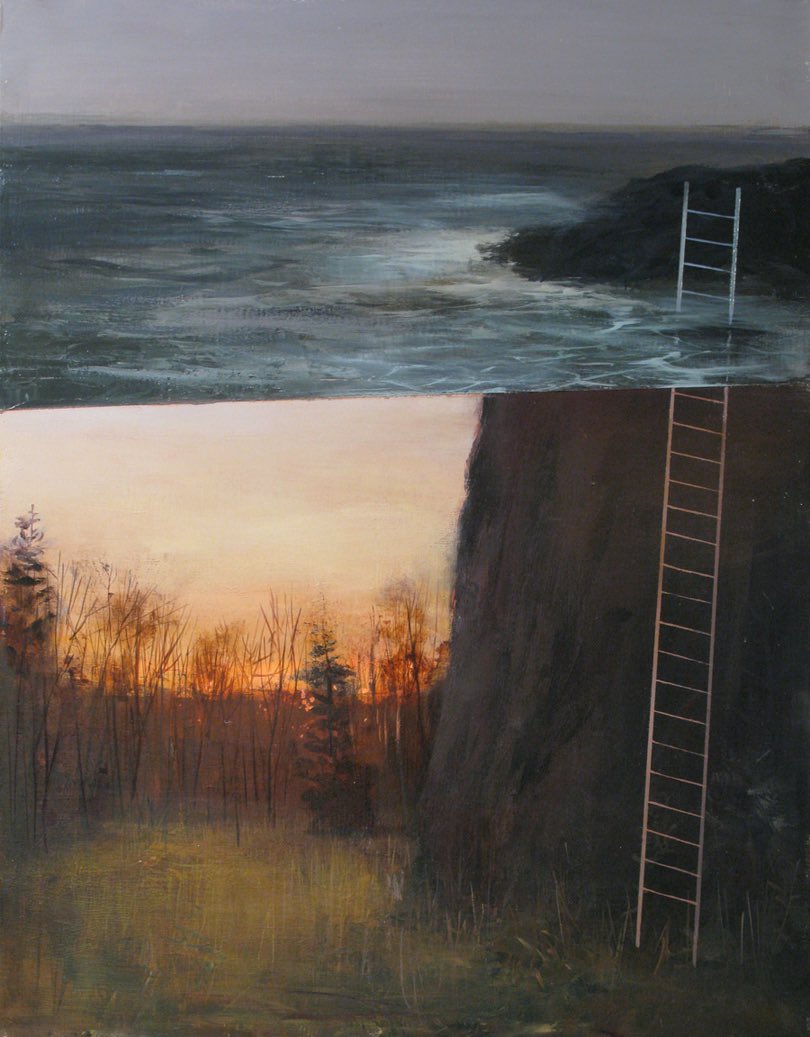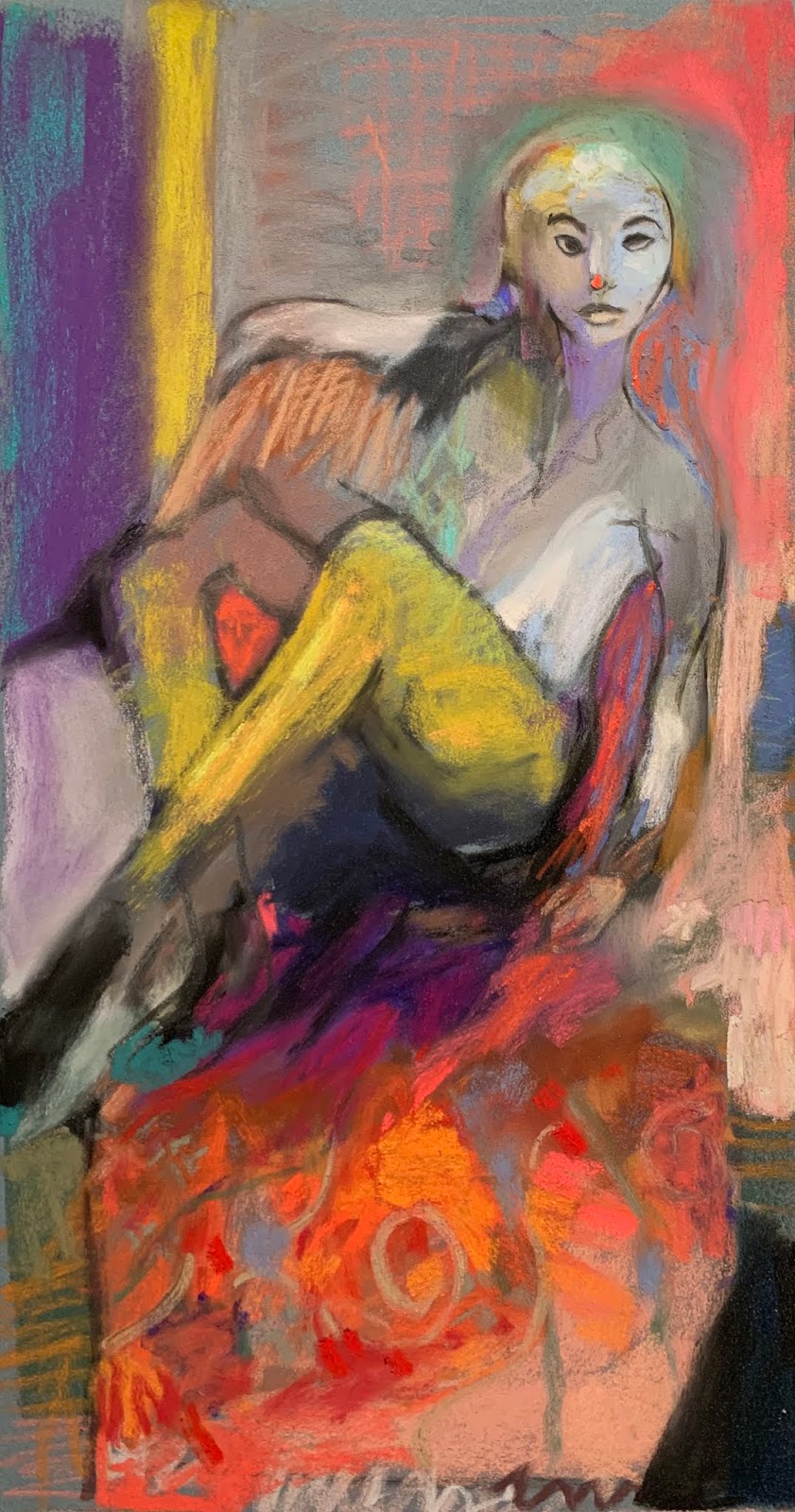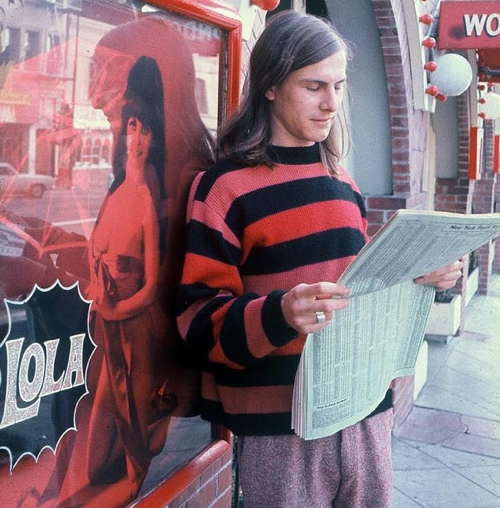 Every moment think steadily as a Roman and a man to do what thou hast in hand with perfect and simple dignity, and feeling of affection, and freedom, and justice; and to give thyself relief from all other thoughts. And thou wilt give thyself relief, if thou doest every act of thy life as if it were the last, laying aside all carelessness and passionate aversion from the commands of reason, and all hypocrisy, and self-love, and discontent with the portion which has been given to thee. Thou seest how few the things are, the which if a man lays hold of, he is able to live a life which flows in quiet, and is like the existence of the gods; for the gods on their part will require nothing more from him who observes these things. — The Meditations by Marcus Aurelius
Every moment think steadily as a Roman and a man to do what thou hast in hand with perfect and simple dignity, and feeling of affection, and freedom, and justice; and to give thyself relief from all other thoughts. And thou wilt give thyself relief, if thou doest every act of thy life as if it were the last, laying aside all carelessness and passionate aversion from the commands of reason, and all hypocrisy, and self-love, and discontent with the portion which has been given to thee. Thou seest how few the things are, the which if a man lays hold of, he is able to live a life which flows in quiet, and is like the existence of the gods; for the gods on their part will require nothing more from him who observes these things. — The Meditations by Marcus Aurelius
 271 Years Before Pantone, an Artist Mixed and Described Every Color Imaginable in an 800-Page Book In 1692 an artist known only as A. Boogert sat down to write a book in Dutch about mixing watercolors. Not only would he begin the book with a bit about the use of color in painting, but would go on to explain how to create certain hues and change the tone by adding one, two, or three parts of water. The premise sounds simple enough, but the final product is almost unfathomable in its detail and scope.
271 Years Before Pantone, an Artist Mixed and Described Every Color Imaginable in an 800-Page Book In 1692 an artist known only as A. Boogert sat down to write a book in Dutch about mixing watercolors. Not only would he begin the book with a bit about the use of color in painting, but would go on to explain how to create certain hues and change the tone by adding one, two, or three parts of water. The premise sounds simple enough, but the final product is almost unfathomable in its detail and scope.
Spanning nearly 800 completely handwritten (and painted) pages, Traité des couleurs servant à la peinture lâ eau, was probably the most comprehensive guide to paint and color of its time. According to Medieval book historian Erik Kwakkel who translated part of the introduction, the color book was intended as an educational guide. The irony being there was only a single copy that was probably seen by very few eyes.
 Under UV Light, Platypuses Radiate a Fluorescent Green-Blue Hue—But Scientists Aren’t Sure Why
Under UV Light, Platypuses Radiate a Fluorescent Green-Blue Hue—But Scientists Aren’t Sure Why
The Power of a South Pole Sunrise After Six Months of Darkness – These days, those who overwinter at Pole bid farewell to the last flight by watching all three versions of The Thing, about an Antarctic station crew torn apart by paranoia and an alien invader. (They used to watch Kubrick’s The Shining, but now they save that for midwinter.) “People who are curious have a great time,” Schwarz says. ”It doesn’t matter if you have a PhD, if you’re a cook, if you’re a mechanic — everybody’s equal.”
 The Cyanometer Is a 225-Year-Old Tool for Measuring the Blueness of the Sky Cyanometer. The simple device was invented in 1789 by Swiss physicist Horace-Bendict de Saussure and German naturalist Alexander von Humboldt who used the circular array of 53 shaded sections in experiments above the skies over Geneva, Chamonix and Mont Blanc. The Cyanometer helped lead to a successful conclusion that the blueness of the sky is a measure of transparency caused by the amount of water vapor in the atmosphere.
The Cyanometer Is a 225-Year-Old Tool for Measuring the Blueness of the Sky Cyanometer. The simple device was invented in 1789 by Swiss physicist Horace-Bendict de Saussure and German naturalist Alexander von Humboldt who used the circular array of 53 shaded sections in experiments above the skies over Geneva, Chamonix and Mont Blanc. The Cyanometer helped lead to a successful conclusion that the blueness of the sky is a measure of transparency caused by the amount of water vapor in the atmosphere.

Tico, a 20-month-old giraffe, licks his neck while checking out his new enclosure at the Wile Place Project in Bristol.
Katherine Rundell · Consider the Giraffe · Once full grown they can gallop at 40 mph on feet the size of dinner plates, but it remains safer not to: they self-entangle. Their tongue, which is dark purplish-blue to protect it from the sun and more powerful than that of any other ungulate, is fifty centimeters  long: they can scrape the mucus from deep inside their own nostrils with the tip. And they are the skyscrapers of mammals, unmatched: the tallest giraffe ever recorded, a Masai bull, measured 19.3 feet. The explorer John Mandeville only mildly exaggerated when he wrote of the ”gerfauntz”, in the first English-language account in 1356, that it had a neck ”twenty cubytes long [about thirty feet] … he may loken over a gret high hous.” (As Mandeville is himself a fictional appellation for an unknown man, some laxity in measurements is to be expected.) But though so tall, they are hospitable to the small. They have been known to host tiny yellow-billed oxpeckers on their bodies: the small birds remove ticks from their skin, and clean the food from between their teeth. Giraffes have been photographed at night with clusters of sleeping birds tucked into their armpits, keeping them dry.
long: they can scrape the mucus from deep inside their own nostrils with the tip. And they are the skyscrapers of mammals, unmatched: the tallest giraffe ever recorded, a Masai bull, measured 19.3 feet. The explorer John Mandeville only mildly exaggerated when he wrote of the ”gerfauntz”, in the first English-language account in 1356, that it had a neck ”twenty cubytes long [about thirty feet] … he may loken over a gret high hous.” (As Mandeville is himself a fictional appellation for an unknown man, some laxity in measurements is to be expected.) But though so tall, they are hospitable to the small. They have been known to host tiny yellow-billed oxpeckers on their bodies: the small birds remove ticks from their skin, and clean the food from between their teeth. Giraffes have been photographed at night with clusters of sleeping birds tucked into their armpits, keeping them dry.
 daily timewaster: A Jeep in its natural environment
daily timewaster: A Jeep in its natural environment
 The Most Controversial Artworks Of The 20th Century Controversial French painter Balthasar Klossowski de Rola, known as Balthus, is certainly one of the greatest artists of the 20th century. A nostalgic lover of the Age of Innocence, however, lonely and mysterious. In this disturbing painting, resembling a ”pietà”, we see a guitar teacher with her young student splayed across her lap with her skirt raised and genitals exposed. The teacher is playing the student like a musical instrument. Her fingers strum the invisible guitar strings inside her thighs. The painting generated quite a lot of discussions. Did Balthus have bad intentions? This painting has changed hands many times but now belongs, to Greek shipowner, Stavros Niarcho
The Most Controversial Artworks Of The 20th Century Controversial French painter Balthasar Klossowski de Rola, known as Balthus, is certainly one of the greatest artists of the 20th century. A nostalgic lover of the Age of Innocence, however, lonely and mysterious. In this disturbing painting, resembling a ”pietà”, we see a guitar teacher with her young student splayed across her lap with her skirt raised and genitals exposed. The teacher is playing the student like a musical instrument. Her fingers strum the invisible guitar strings inside her thighs. The painting generated quite a lot of discussions. Did Balthus have bad intentions? This painting has changed hands many times but now belongs, to Greek shipowner, Stavros Niarcho
 Japan’s Kei-tora ‘Mini Truck’ Gardening Contest | Since 2016, a uniquely Japanese event has been held in Osaka each year: the Kei-tora Gardening Contest. The kei-tora, formally known as the Kei Truck, is a tiny but practical vehicle common in Japan, particularly on smaller construction or agricultural work sites.
Japan’s Kei-tora ‘Mini Truck’ Gardening Contest | Since 2016, a uniquely Japanese event has been held in Osaka each year: the Kei-tora Gardening Contest. The kei-tora, formally known as the Kei Truck, is a tiny but practical vehicle common in Japan, particularly on smaller construction or agricultural work sites.
 Dull Tool Dim Bulb: Giant Tin Sardine Can Submarine Explores Lake Michigan Waters Folk Art Fish Sculpture Well, a giant homemade fish submarine! “Lake Crossing in Sardine Can” reads the caption. I’m not sure the date. The fish is just over ten feet long. The maker Barney Connett prepares for launch.
Dull Tool Dim Bulb: Giant Tin Sardine Can Submarine Explores Lake Michigan Waters Folk Art Fish Sculpture Well, a giant homemade fish submarine! “Lake Crossing in Sardine Can” reads the caption. I’m not sure the date. The fish is just over ten feet long. The maker Barney Connett prepares for launch.
 The Steamboat In the Cornfield On the first Sabbath after the Virginia had grounded—March 13th, 1910—the packet boat Tacoma ran a special charter from Gallipolis and Point Pleasant to the Williamson’s family farm in Willow Grove, where the Virginia lay bowed in their cornfield. Some 300 excursionists, dressed in their Sunday best, made an afternoon of it, viewing the massive spectacle and enjoying the unseasonably warm, but windy weather. While his passengers were milling about, Jesse Hughes, the captain of the Tacoma, took this photo from his pilothouse on the shore of the Ohio River, some 700 feet away.
The Steamboat In the Cornfield On the first Sabbath after the Virginia had grounded—March 13th, 1910—the packet boat Tacoma ran a special charter from Gallipolis and Point Pleasant to the Williamson’s family farm in Willow Grove, where the Virginia lay bowed in their cornfield. Some 300 excursionists, dressed in their Sunday best, made an afternoon of it, viewing the massive spectacle and enjoying the unseasonably warm, but windy weather. While his passengers were milling about, Jesse Hughes, the captain of the Tacoma, took this photo from his pilothouse on the shore of the Ohio River, some 700 feet away.
On hand tools : Essays in Idleness The free man does what he does voluntarily. He does not need a bureaucracy to “guide” him when, for a much smaller outlay, he was already in possession of a Bible and poetry.
“Quest” on CBC, recorded on February 1st 1964.
Since I’m trending I’d like to clarify what I meant when I said “bring back manly men”.
I meant: Bring back manly men.
Terms like “toxic masculinity”, were created by toxic females.
Real women don’t do fake feminism.
Sorry I’m not sorry.
— Candace Owens (@RealCandaceO) November 16, 2020
 Claude Monet: Who Was He, and Why Is He Important? In the early 1890s, Monet bought property and land in the village of Giverny, in Normandy. The artist’s gardens and storied water lily pond would serve as rich inspiration for his best known paintings; today, they are popular tourist destinations. He created hundreds of water lily paintings in the final 30 years of his life, exploring the dreamy effects of the flowers’ reflections in water on both small- and large-scale canvases. During the 1890s Monet also created his famed Rouen Cathedral series, which served as studies of the structure’s Gothic facade over the course of different seasons and times of day, and his haystacks series, which was presented at Galerie Durand-Ruel and received widespread praise upon its debut.
Claude Monet: Who Was He, and Why Is He Important? In the early 1890s, Monet bought property and land in the village of Giverny, in Normandy. The artist’s gardens and storied water lily pond would serve as rich inspiration for his best known paintings; today, they are popular tourist destinations. He created hundreds of water lily paintings in the final 30 years of his life, exploring the dreamy effects of the flowers’ reflections in water on both small- and large-scale canvases. During the 1890s Monet also created his famed Rouen Cathedral series, which served as studies of the structure’s Gothic facade over the course of different seasons and times of day, and his haystacks series, which was presented at Galerie Durand-Ruel and received widespread praise upon its debut.
Starting to believe significant portions of the population do not possess rational souls, exist only to test those of us who do, and will cease to exist after death.
— Serf of Grey (@SerfofGrey) November 17, 2020
 Evelyn McHale, the Most Beautiful Suicide Shortly before 10:30 am, May 1st, 1947, 23 year-old Evelyn McHale bought a ticket to the 86th floor observation deck of the Empire State Building. Ten minutes later patrolman John Morrissey, who was directing traffic below, noticed a white scarf floating down from the upper floors of the building then heard a crash. Evelyn had stepped out on the parapet, jumped, cleared the setbacks and landed on the roof of a United Nations limousine parked on 34th Street, some 200 hundred feet west of Fifth Avenue. Robert Wiles, a sometime cabbie and “photography student” saw the commotion and rushed across the street where, standing on the sidewalk only a few feet from the car, he took his iconic photo of Evelyn just four minutes after her death. Still clutching her pearl necklace with her gloved hand, Evelyn looks disarmingly placid and composed—as if she was simply asleep. Around her, however, the broken glass and crumpled sheet metal of a car roof shows how brutally destructive her 1040-foot jump was. Wiles, perhaps inadvertently, managed to capture in a single photograph both grace and beauty as well as and horror and death. The image remains as haunting and affecting as it did some 60 years ago.
Evelyn McHale, the Most Beautiful Suicide Shortly before 10:30 am, May 1st, 1947, 23 year-old Evelyn McHale bought a ticket to the 86th floor observation deck of the Empire State Building. Ten minutes later patrolman John Morrissey, who was directing traffic below, noticed a white scarf floating down from the upper floors of the building then heard a crash. Evelyn had stepped out on the parapet, jumped, cleared the setbacks and landed on the roof of a United Nations limousine parked on 34th Street, some 200 hundred feet west of Fifth Avenue. Robert Wiles, a sometime cabbie and “photography student” saw the commotion and rushed across the street where, standing on the sidewalk only a few feet from the car, he took his iconic photo of Evelyn just four minutes after her death. Still clutching her pearl necklace with her gloved hand, Evelyn looks disarmingly placid and composed—as if she was simply asleep. Around her, however, the broken glass and crumpled sheet metal of a car roof shows how brutally destructive her 1040-foot jump was. Wiles, perhaps inadvertently, managed to capture in a single photograph both grace and beauty as well as and horror and death. The image remains as haunting and affecting as it did some 60 years ago.
 The Face of the HP-35 Sometime in late 1971, Peter Nelson, from Hewlett-Packard’s Corporate Relations Department in Palo Alto, enlisted Karen Cambria, from the Automatic Measurement Division (conveniently, in the same building), to pose with their new electronic device, a scientific calculator they named the HP-35. Norton Pearl took several photos of Karen with the calculator and it was this photo that ended up in the press kit.
The Face of the HP-35 Sometime in late 1971, Peter Nelson, from Hewlett-Packard’s Corporate Relations Department in Palo Alto, enlisted Karen Cambria, from the Automatic Measurement Division (conveniently, in the same building), to pose with their new electronic device, a scientific calculator they named the HP-35. Norton Pearl took several photos of Karen with the calculator and it was this photo that ended up in the press kit.
 The XB-70 On September 21st, 1964, AV-1 took its maiden flight from Palmdale to Edwards AFB. One engine failed during the flight and the rear wheels locked on landing, causing a fire. Later problems included honeycomb panels that separated, landing gear that wouldn’t retract, loss of hydraulic pressure and even peeling paint. Eventually the mechanical problems were fixed and the program began achieving its operational goals: the plane reached Mach 1 on October 12th and Mach 2 on March 24th, 1965. Then, on 14 October 14th, 1965—exactly 17 years to the day after Chuck Yeager first broke the sound barrier—it surpassed mach 3. AV-2, an updated design that solved many of the problems with the first airframe, first flew in July, 1965, and eight months later reached Mach 3.08.
The XB-70 On September 21st, 1964, AV-1 took its maiden flight from Palmdale to Edwards AFB. One engine failed during the flight and the rear wheels locked on landing, causing a fire. Later problems included honeycomb panels that separated, landing gear that wouldn’t retract, loss of hydraulic pressure and even peeling paint. Eventually the mechanical problems were fixed and the program began achieving its operational goals: the plane reached Mach 1 on October 12th and Mach 2 on March 24th, 1965. Then, on 14 October 14th, 1965—exactly 17 years to the day after Chuck Yeager first broke the sound barrier—it surpassed mach 3. AV-2, an updated design that solved many of the problems with the first airframe, first flew in July, 1965, and eight months later reached Mach 3.08.


![Allen Ginsberg: The Interview, <strong> ➡ 1972 ⬅ </strong> [Republished by unpopular demand] ginsbergnirvana](https://americandigest.org/wp/wp-content/uploads/2022/05/ginsbergnirvana-150x150.jpg)





 Gerard Van der Leun
Gerard Van der Leun
























Comments on this entry are closed.
How do you do it, G?
You really do have the most amazing blog in the universe!
Pedo is ugly, not beautiful, no matter how slyly presented. Schlock value.
The Steamboat In The Cornfield, brings back memories of the Sailing vessel, Prins Valdemar, in Bay Front Park, in Miami. The story (untrue) I was told by my cracker relatives was that it washed ashore in one of the 1920s’ hurricanes & it was cheaper to dig a hole, right it, and set it up as an aquarium. As a ten year old, I was quite impressed. It was demolished around 1950, I wonder how many remember it.
I’ll make a quick political comment, because I need to, and then I’ll be back later to talk color, a favorite subject. The legal challenges that Team Trump are putting forth still, as far as my fears go, place the fate of the country in the court’s hand. Do you see legislatures at state or national level making anything whatsoever of this steal? No. This ought to give you chills. Sure, one or two rockribbed rupubs, like Cruz and…who else? fuuuhhhk me, USA. Fuhhhhk.
So, what Trump’s legal eagles must do is place these judges in positions that they cannot decide against Trump. Put the whole thing in the public’s eye! Do not give them a legal choice to allow certification. This must happen this way.
If this goes Biden’s way, that was the last *election* held in America. You realize that, right?
OK, back later.
Meh. Where muh platypuses grant coin be at?
Because Gia doomz
CIII
In regards to “The Most Controversial Artworks of the 20th Century,” I’ll quote Lynn Harold Hough, from 1939.
The three essential matters in the aesthetic life are the existence of the beautiful, the existence of the ugly, and the existence of an intelligence capable of seeing the difference between the two and of choosing the beautiful instead of the ugly.
Those works display both the alleged artists’, and critics’, lack of capable intelligence.
HP calculators saved me thousands of hours of time doing tedious math. Started with an HP 21 which I still have in a file cabinet. Then I upgraded to an HP 11C of which I have three and never looked back. I sent the first HP 11C to the HP repair department once for removal of a dead ant in the display. That was around 35 years ago. I still use all three HP 11C rigs daily. Why three calculators? One at home, two in my machine shop.
Those calculators are the only decent thought I have of HP now.
Florence Nightingale’s graphs-
https://4.bp.blogspot.com/-G5MZszDwcF4/WEuv981-miI/AAAAAAAABuI/6rUUakEdZUUUuTcrnPmECdcBOAfT9ywAwCLcB/s1600/Florence%2BNightingale.jpg
an old Scientific American article is informative and enjoyable.
later in her life, Florence suffered psychosomatic illness and took to her bed.
the little trucks are available in the US. the last time I checked the shifters were captured by a plate only allowing them to be run in first gear. looked easily removable. righthand drive. the coast guard station in bayonne, nj had one as a utility vehicle.
farm vehicle permit might be a work-around to all-speed transmission and street legality.
The platypuses obviously radiate fluorescent blue-green so the aliens can easily spot them when they return to take them home…
This won’t be the last election held in America. It may be the last election of The United States of America.
People will live here for a long, long time because it’s a beautiful land and they will need to govern themselves. Hopefully the memories of the years that the trees and the streetlights bore human fruit, some fields became cemeteries will lead them to run fair and honest elections because of the final cost of the alternative.
I thought this would be over, but I’m shelling out money for “Stop the Steal” yard signs and sending money to the Trump legal team. I suppose my name will be ending up on AOC’s little list. That’s OK, she’s on mine.
My compliments, John Venlet. Are all of your thoughts beautiful? If this is the parameters of fine art, then we are headed back to not the Dark Ages, not the classic not the ancient eras, but the prehistoric eras. Art includes beauty, but it is larger than that.
Lovely watercolor book and a magnificent treasure. So happy that is preserved.
Cyan is more of a light than a color, but we could go for days on that subject. I’ll bring the whisky…
My compliments, John Venlet. Are all of your thoughts beautiful?
Indeed not, Casey, but I do have an intelligence capable of knowing that some of my thoughts are repugnantly ugly and thus are not worth the light of day.